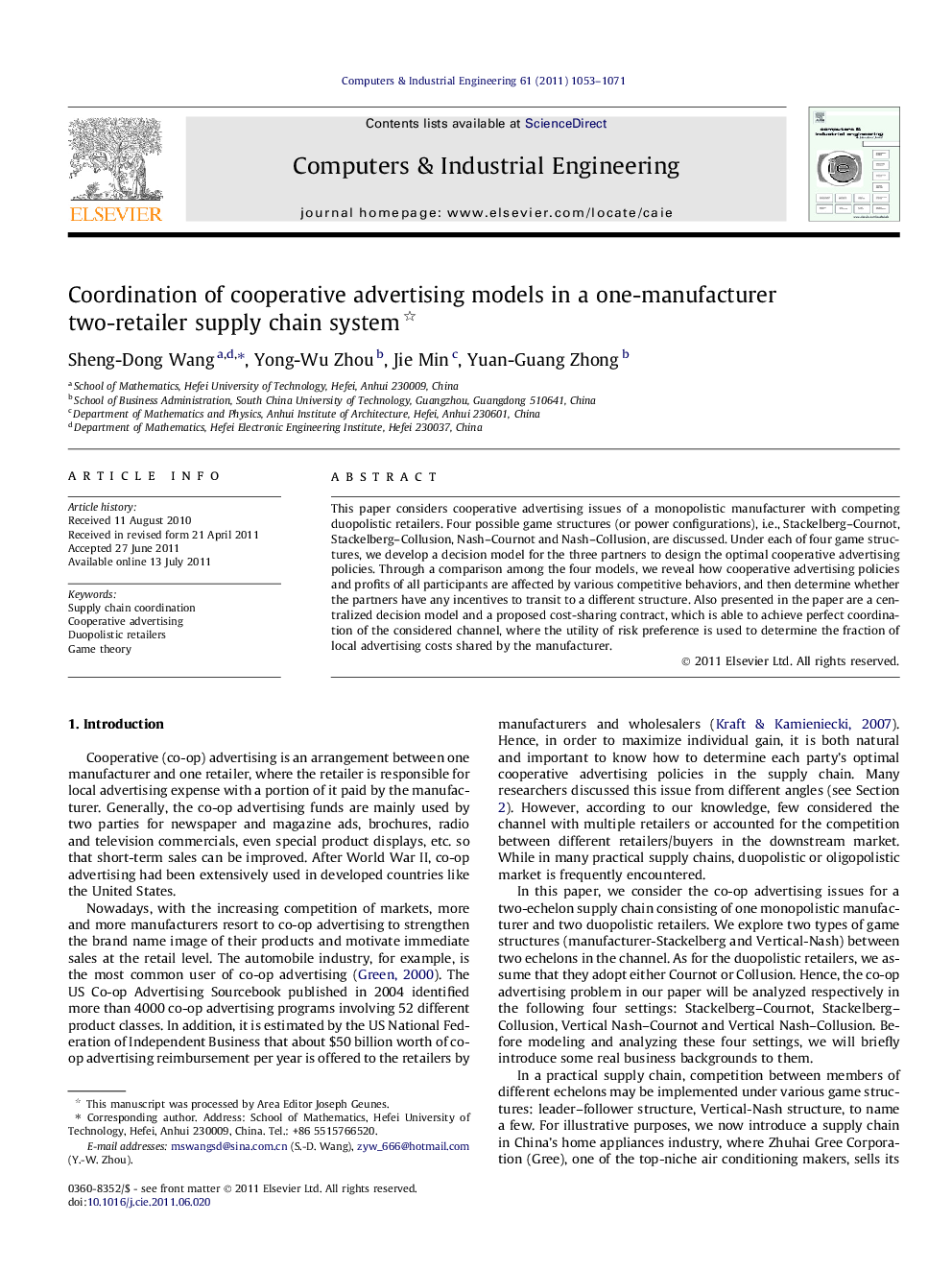| Article ID | Journal | Published Year | Pages | File Type |
|---|---|---|---|---|
| 1135590 | Computers & Industrial Engineering | 2011 | 19 Pages |
This paper considers cooperative advertising issues of a monopolistic manufacturer with competing duopolistic retailers. Four possible game structures (or power configurations), i.e., Stackelberg–Cournot, Stackelberg–Collusion, Nash–Cournot and Nash–Collusion, are discussed. Under each of four game structures, we develop a decision model for the three partners to design the optimal cooperative advertising policies. Through a comparison among the four models, we reveal how cooperative advertising policies and profits of all participants are affected by various competitive behaviors, and then determine whether the partners have any incentives to transit to a different structure. Also presented in the paper are a centralized decision model and a proposed cost-sharing contract, which is able to achieve perfect coordination of the considered channel, where the utility of risk preference is used to determine the fraction of local advertising costs shared by the manufacturer.
► We explore the cooperative advertising issues of a monopolistic manufacturer with competing duopolistic retailers. ► Four possible game structures (or power configurations) are discussed. ► We propose a cost-sharing contract to achieve perfect coordination of the considered channel. ► The Nash bargaining approach is adopted to determine the value of the shared fraction of local advertising expenditures.
